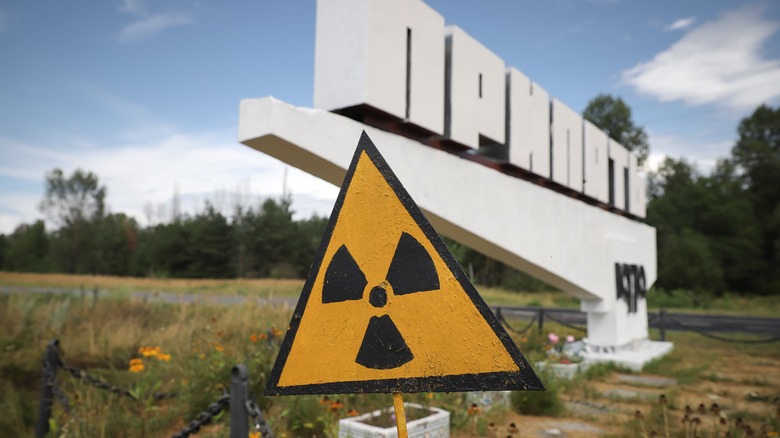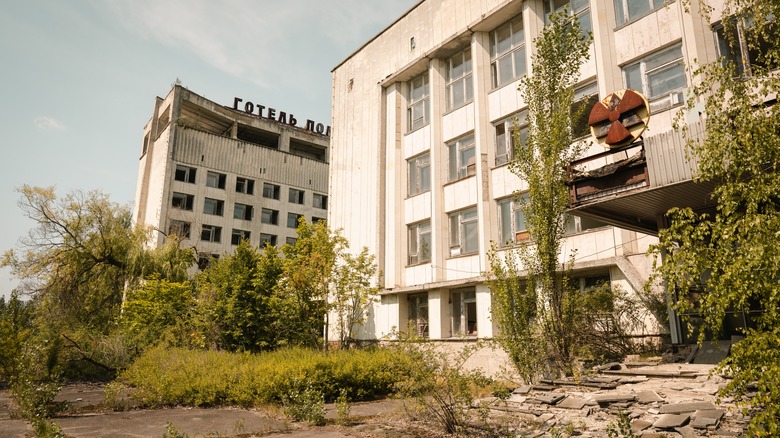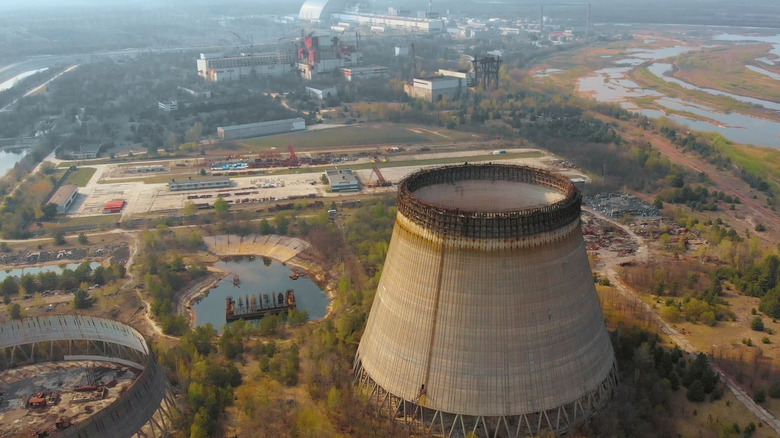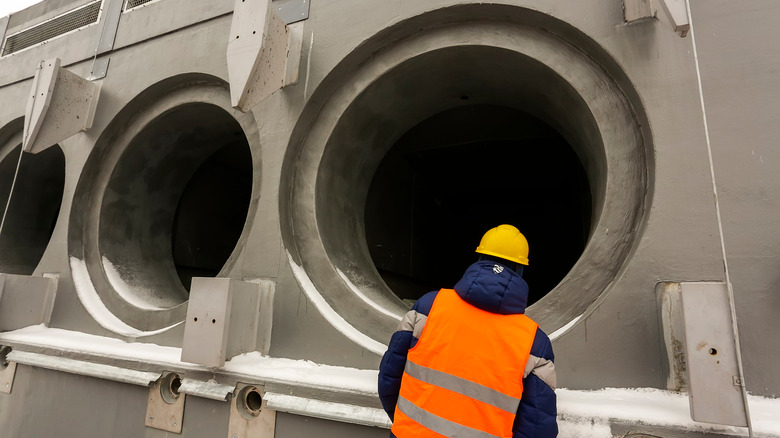What Happens If Chernobyl Loses Power?
As Russian forces continue to press forward into Ukraine, one site has drawn particular attention: the Chernobyl nuclear power plant. Located on the north side of Ukraine, near the border with Belarus, the power plant and its associated exclusion zone was one of the first regions of Ukraine to be occupied by Russian forces when it was taken on February 24, according to Fox News. Viewers from Ukraine and abroad have kept an eye on conditions at the plant, including the technicians who have been working at the plant nonstop since it was taken.
Now, in the latest Chernobyl update, Ukrainian officials have announced that Chernobyl has lost power following damage incurred by invading Russian forces, leaving the plant reliant on diesel and backup battery power, according to The New York Times. The development has left some, including Ukrainian Foreign Affairs Minister Dmytro Kuleba, concerned about the threat of potential nuclear contamination in nearby regions. But how worried should we really be?
History of the Chernobyl plant
The Chernobyl nuclear disaster is widely considered to be the worst nuclear accident in history, according to The New York Times. The disaster occurred on April 26, 1986, when Ukraine was still a part of the USSR, according to the World Nuclear Association. On that morning, a planned test of the reactor went wrong, causing the reactor to explode. Two workers died in the immediate accident, and more people would die in the coming days and weeks, including firefighters and others working to contain the fallout from the meltdown.
According to experts, the accident was the result of many conflating factors, rather than a single error. Operators made several crucial mistakes while preparing the reactor for testing, including shutting off backup systems which would have helped stabilize the reactor. However, other elements were at play as well, including a lack of safety policies and a poor reactor design. Overall, at least 31 people died during the accident, though many more deaths over years from cancers and other conditions could have been caused partially by radioactive fallout (via AS).
Since the accident, domes and other containment measures have been put in place to reduce the impact of any further radioactive decay, and the plant is no longer active. Still, the area around Chernobyl remains part of an exclusion zone where visitation and residency is restricted.
Current conditions at Chernobyl
When the electrical grid at Chernobyl was cut off on March 9, the system switched to a reserve diesel supply system which could run the plant for 48 hours, according to Ukrainian Foreign Minister Dmytro Kuleba (via Fox News). Other reports have also suggested some functions are running on battery power, according to The New York Times. But without electricity, systems are not operating at full capacity, and functions can't continue running on alternative power sources indefinitely.
Dmytro Kuleba expressed concern at these conditions, tweeting that without electrical power, radiation leaks will be "imminent." His concerns are tied to the nuclear cooling systems, which require electrical power to function. In nuclear power plants, fresh nuclear waste is stored in pools of water to allow the waste to cool. Fresh waste is very hot, so must be constantly circulated to retain a safe temperature. If it were exposed to air, it could catch fire, inciting a new string of reactions. However, over time, waste naturally cools and stabilizes, and eventually, nuclear waste can be moved to dry storage facilities, where it can be exposed directly to air. Waste at the Chernobyl plant is stored in wet nuclear cooling systems.
At least one nuclear expert echoed Kuleba's concerns, saying in an interview with Reuters, "Power cuts to nuclear facilities are potentially very dangerous. The power cut could lead to water in the storage facility evaporating and exposure of spent fuel rods. They could eventually melt and that could lead to significant radiation releases."
Chernobyl's waste is old and relatively stable
Luckily, Chernobyl's waste is decades old, which means it is largely stable, according to The New York Times. Most of the waste stored at the Chernobyl nuclear facility is cool enough to be moved from wet into dry storage, the International Atomic Energy Agency (IAEA) told the Times. In fact, technicians at the Chernobyl plant actually began the process of moving nuclear waste to a dry storage facility in 2020. That suggests, even if Chernobyl does lose power, there isn't a strong risk for any sort of immediate meltdown. The IAEA wrote on Twitter that they saw "no critical impact on safety" (via Reuters) resulting from the electrical power loss at Chernobyl.
Still, they condemned the Russian actions surrounding the Chernobyl plant as dangerous. On Twitter, the agency said that interrupting the electrical supply to Chernobyl, as well as requiring one shift of employees to stay at the plant for two weeks, violated "key safety pillar[s]" of nuclear safety, according to Fox News.



